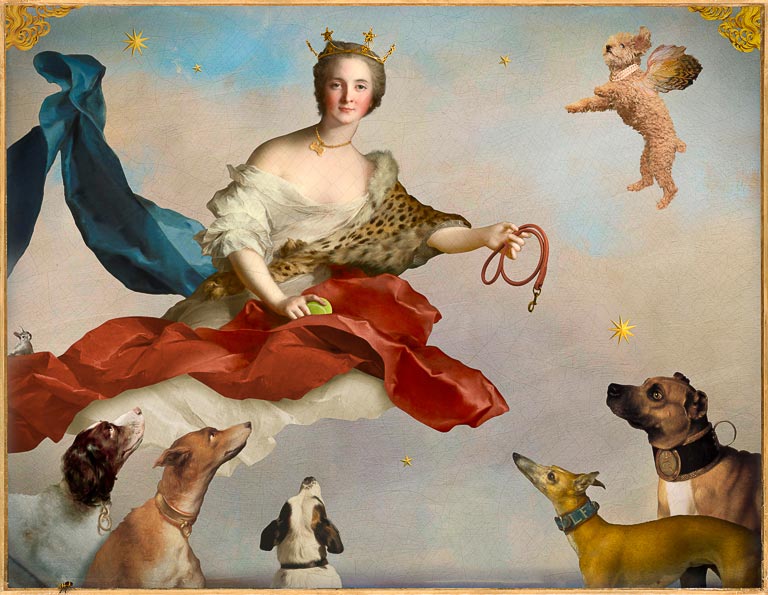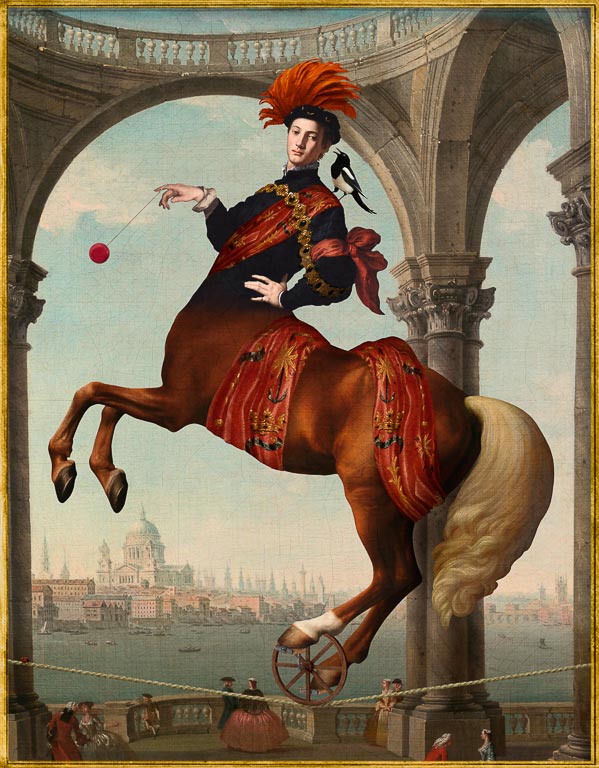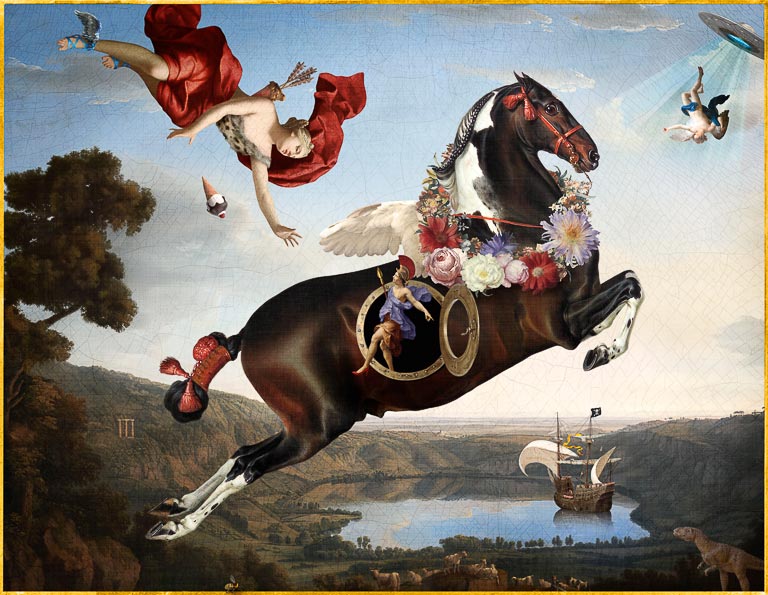What’s New
RECENT WORK - WALKIES

If dogs had mythology, this would be their goddess – the woman with the leash and the ball. I wrote down the word “Glorious” and kept it near while I worked.
The goddess figure is a Diana. A huntress is what dogs are looking for in a goddess.
This work follows stylized French court portraits of the 18th century. The Goddess is from a Portrait of Madame Bonnier de la Mosson as Diana by Nattier.
Keep your eye on the ball.
HIS RADIANCE

Centaurs, across the broad history of art are wild, rapacious, and violent. With the exception of a few, they represent man’s bestial nature.
We can only aspire to this centaur’s dazzle, self-possession, grace, weird athleticism, and sartorial knack.
He’s mythology. He’s civilization. He pedals all he is across a tightrope on a unicycle, while flinging a yoyo. He may be saying something about the fragile underpinnings of our civilization.
The man hails from “Portrait of a Young Man” by Bronzino, painted in the 1530’s.
The horse portion of the centaur is from “Whistlejacket” by George Stubbs,1762. I loved horses. I learned to draw by extensively and repetitively drawing from Stubb’s horses and dogs. The fabric wrapped around the horse is from “Portrait of Francisco Hurtado de Mendoza”, anonymous, 1601, Rijksmuseum.
MYTHOLOGY GONE AWRY

In mythology paintings from the Renaissance forward, major and minor deities play out well known scripts. Here, mythology goes off the rails. Hesperus gets abducted by a flying saucer.
The ship (from “Landscape with the Fall of Icarus” by Pieter Bruegel the Elder) flies a pirate flag.
Jean-Marc Nattier’s Venus, masquerading as Diana and wearing Hermes’ winged sandals, has been unhorsed and has lost her ice cream cone.
The deities are beset by anachronisms. Achilles strides out an open porthole in Pegasus wearing high heels. Somehow a dinosaur has made an appearance.
Relative scale is broken. Achilles is really, really small.
Clearly, this train wreck of mayhem never made the known pantheon of myth.
MADCAP HIJINKS

MADCAP HIJINKS! We all have something in us that likes a thrill. Being flamboyant! Risky behavior! Glory! There’s a daredevil corner in all our hearts.
I grew up in Montana and took Drivers’ Ed from Evil Knieval’s best friend. This picture is a little bit autobiographical.
The real-life porcupine I photographed for this picture is Dirk from Minnesota. I would assess his character as fairly lawless. Wearing red shoes around him will bring out his worst. Therefore, his motorcycle is red. Cowboy boots, in this context, mean straight up reckless.
The objects in the picture fit with its crazy logic, but they also have to look good together. I like how the cowboy boots, the lollipop, the flame-detailed taillight, and the nearby magpie wing look together.
I made a porcupine quill brush in Photoshop for this picture. Every quill on each porcupine is drawn one by one.
Bright candy colors work best here, as a porcupine does not have a nuanced mind.
Anyway, hang this picture on your wall and you will feel alive, even if you are not in the reckless cowboy boots.
